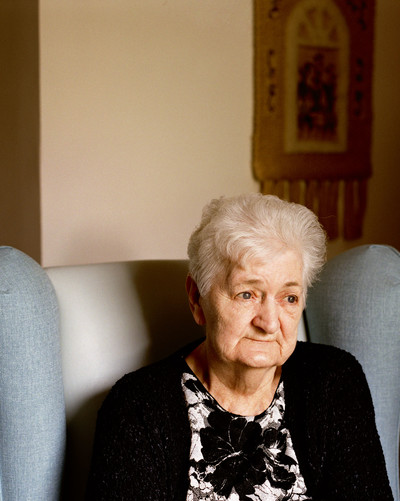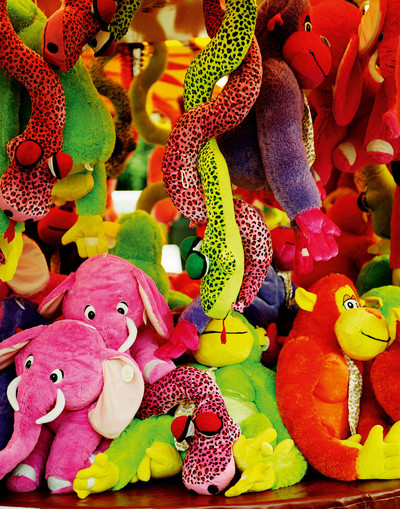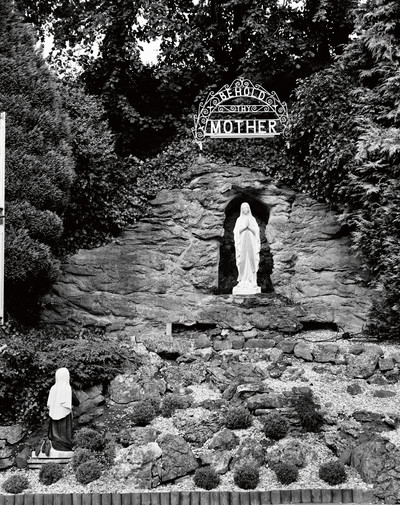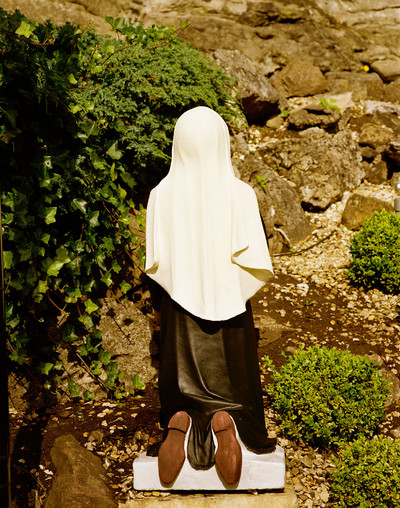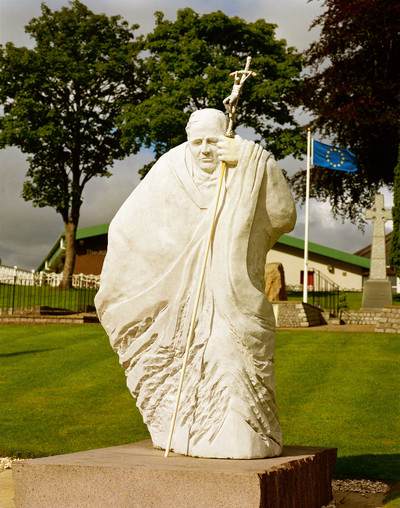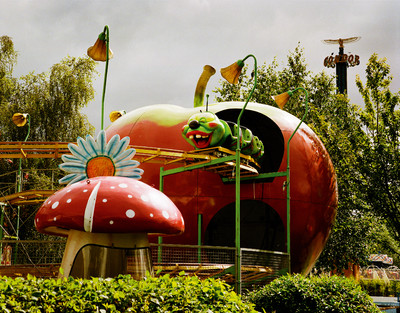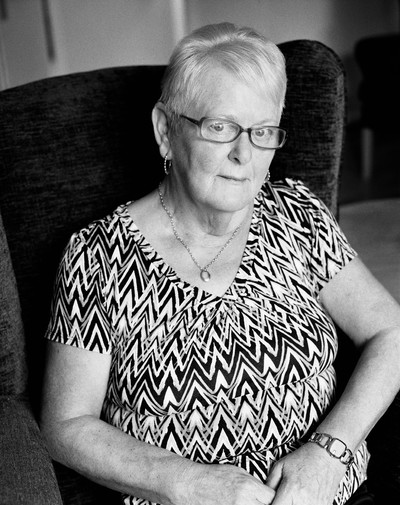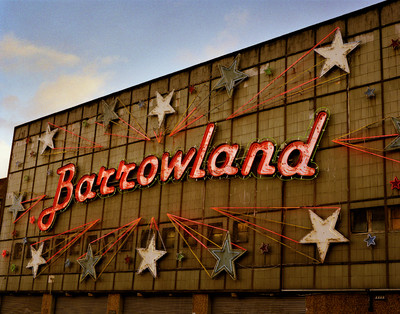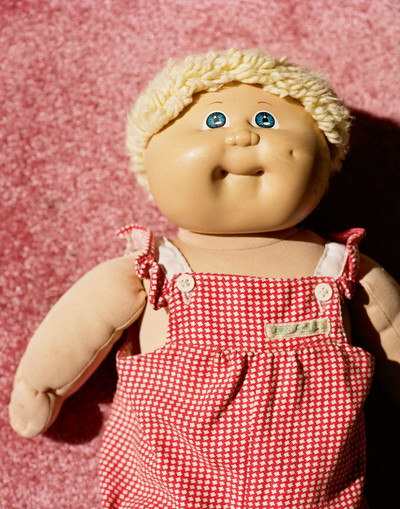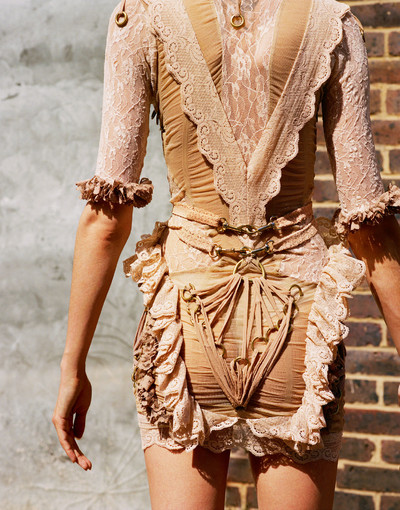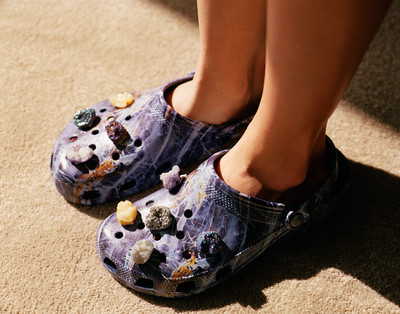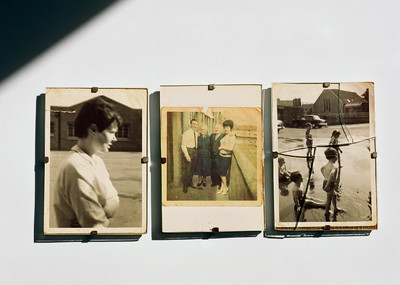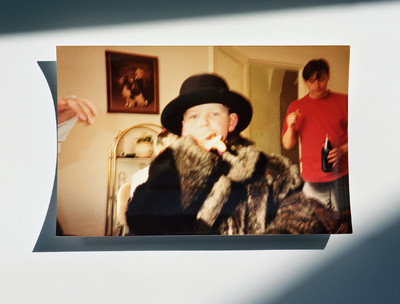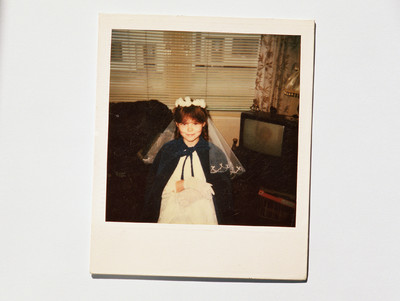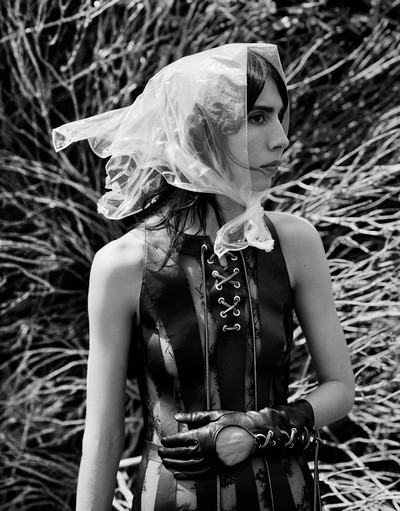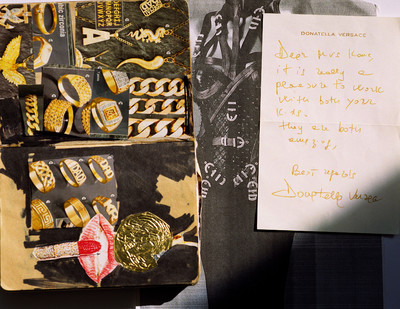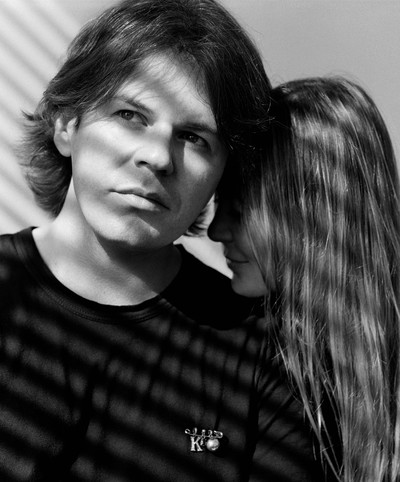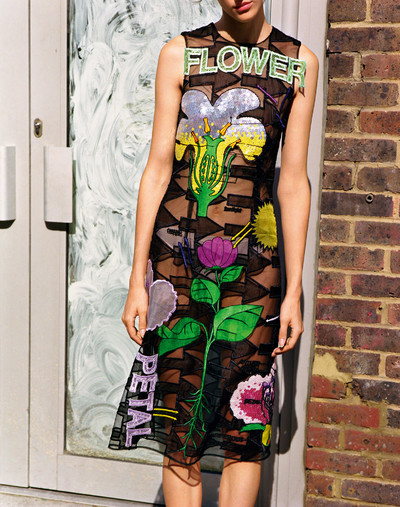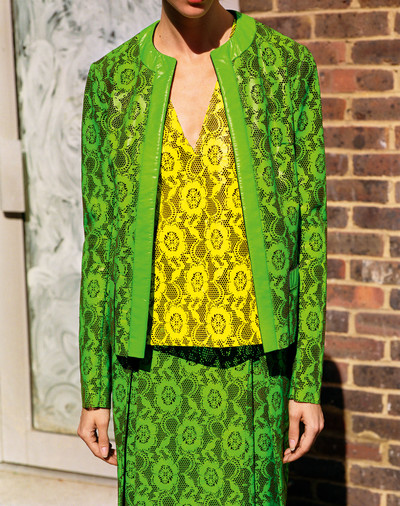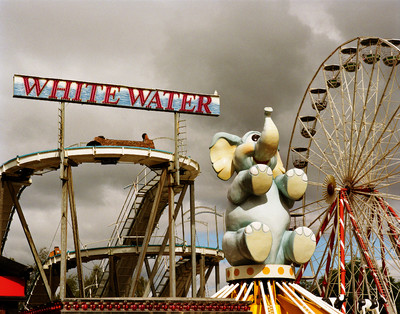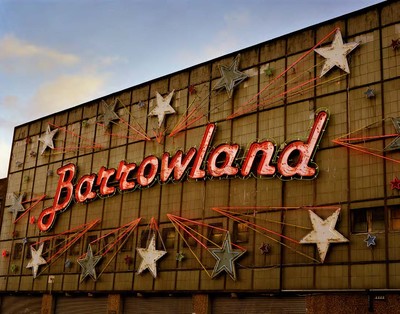The autobiographical themes and inspirations for a decade of Christopher Kane.
By Jo-Ann Furniss
Photographs by Alasdair McLellan
The autobiographical themes and inspirations for a decade of Christopher Kane.
‘When I was a child, I spake as a child, I understood as a child, I thought as a child: but when I became a man, I put away childish things.’ 1 Corinthians 13:11
This is not the case for Christopher Kane. In fact, both Christopher and Tammy Kane refuse to put away childish things in what they do. In the 10 years that their label has existed, a distinct autobiographical element has emerged in the collections, with seasons functioning as chapters. And much of this autobiography is devoted to the pair’s personal childhood experiences and obsessions.
For example, a collection like Spring/Summer 2013’s homage to Frankenstein’s monster and the rest of the Universal Studios ghouls might be traced back to being frightened to death by their Auntie Mary’s stories of ghosts or Auntie Sandra allowing them to watch The Exorcist at far too early an age. That past also means that Christopher Kane still cannot go to a fun fair and enter a haunted house or ride a ghost train without becoming a hysterical, nervous wreck.Tammy Kane could be seen as a little more level-headed – although maybe not much more. It is no coincidence that Tammy’s childhood Cabbage Patch doll is called Bonnie, and so is her five-year-old daughter. ‘The Cabbage Patch doll is actually in the office through there,’ Kane says of his sister’s toy, indicating the adjoining room where she works. Tammy Kane is the most important influence in Christopher’s life. His design process is like a literary stream of consciousness or an interior monologue, transformed into a dialogue by Tammy’s presence. She is intrinsic to the shaping of these collections. She is five years older, but the two have a symbiotic relationship, more like twins, bouncing ideas off each other and developing them. There is a story that Christopher tells about his sister: Once, when Tammy was asked why her name isn’t part of the label, she replied, ‘It is. My name is Kane’.
Christopher Kane always knew he was going to be a fashion designer.
‘I don’t know when I decided,’ he says.
‘I just knew that is what I would do, for as long as I can remember.’ Later, when he was at school, he saw a television programme featuring London’s Central Saint Martins. ‘That’s when I decided, “I’m going there!”’ he says, adding, ‘Where would I be without television? I wouldn’t have known anything about the outside world without it.’ A carefully curated videotape, full of distinct fashion moments from the 1990s, was compiled by Kane as a young teenager and is still one of his most prized possessions.
‘It annoys me when people say that it’s bad taste turned good. It isn’t – I’ve always found these things beautiful. It’s just normal life.’
Christopher Kane was a working class Scottish kid from Motherwell, an unprepossessing former steel town midway between Glasgow and Edinburgh, which fell on hard times and then fell back on call centres after the closure of the Ravenscraig steelworks in 1992. Considering his background, both the decision to be a fashion designer and the aim to train at Saint Martins was quite unusual, with the odds against him achieving either of these ambitions. Yet those odds did not take into account his talent, wilful determination and devotion to fashion. He always knew where he was going. He eventually completed his foundation course, BA and MA at the college. When he finally graduated with his Master’s in 2006, he was widely hailed as the star student. He has since gone on to define London fashion more than any other designer of the past decade.
Starting with his MA collection – which garnered widespread media attention and crucial support in the fashion industry – the Kane signature appeared fully formed and was completely characteristic of what was to come. Those stretch lace dresses even appear, unaltered apart from coloration, in the Spring/Summer 2017 collection. ‘For a collection, we usually start poor and then it progresses to the opposite at the end,’ says Christopher Kane. ‘But it’s the same girl throughout – she travels a long way. It annoys me when people say that it’s bad taste turned good. It isn’t – I’ve always found these things beautiful. It’s normal life. My MA collection was based on child beauty pageants – but I thought those clothes were extraordinary. I thought those kids looked like Fabergé eggs!’ Quietly extravagant, both ordinary and extraordinary, romantic and real, demure and deranged, Christopher Kane’s clothing itself has travelled a long way, from Motherwell to the Met in New York, with Kering, the world’s second-largest luxury goods conglomerate, investing along the way in 2013. And yet the sentiment behind it remains the same.
The Kanes learned the power of clothing at an early age, and it’s the poetry of their upbringing that defines their output today. They never use fashion to hide from who they are or where they are from. And that is the beauty of what they do. They look back at the chic way their mother dressed for a night out at Glasgow’s Barrowland when it was a dancehall in the 1960s – ‘clean’ is how Christopher Kane defines it – or how Tammy used to dress as a teenager in the 1990s. She started shopping at Glasgow’s designer stores aged 12; the siblings would save their pocket money to buy her things. There’s also the shadowy figure of Jan Devine, a woman they are fascinated with from their hometown. ‘It’s always Jan Devine,’ says Tammy Kane. ‘God love her,’ adds Christopher.
‘Versace stood out for us when we were growing up,’ says Tammy. ‘It really got us hooked. Now I’m pals with Donatella – it’s weird.’ In the 1990s, Glasgow was one of the Versace capitals of the world, with one of the biggest stand-alone stores. And it is this dream world of Versace that created a seismic shift for the pair and still holds sway. In 2009, Christopher Kane fulfilled many of the siblings’ childhood ambitions when he became the designer of the re-launched Versus Versace line for seven show seasons. Yet there remains as much Motherwell as Milan in what the duo do, and this is the key to the unique dream world the pair have created through their own clothing line.
Another of the things that is as much Scotland as Italy for the Kanes is the importance of la famiglia. In many ways, Christopher Kane is the closest equivalent that Britain has to an Italian fashion house and how it operates. The house is built for the long term, with the future in mind. Yet its roots are essentially in the past, with all of the close family relationships that entails. In many ways, the beginning of the house was made possible through sacrifices made by Christopher Kane’s family to support his education. For one, Tammy Kane saw Christopher through college both financially and emotionally, working as a receptionist at a car showroom in London, among other jobs. ‘I was just waiting for Christopher to finish his MA so we could really begin,’ she says – she already had her own degree in fashion and textiles from Heriot-Watt University. ‘We had our dream of our own house by that point,’ she says. ‘We knew that was our future.’ The company was founded directly after Christopher’s graduation in 2006 and there has been no looking back since. ‘We did college together,’ says Christopher Kane. ‘She has my BA and my MA from Saint Martins, they’re hers as well. Tammy is my best friend. It’s total trust when you have your blood there. I can tell Tammy my deepest, darkest secrets. She’s always been there for me and always will.’
‘Auntie Sandra had a big part to play in what we do. She let us watch all sorts of horror films, things with devil worship in them, the lot.’
Jo-Ann Furniss: We met very early on, around 2000, at a party with Russell Sage. We all got really, really drunk together. You were doing your work placement at his studio, Christopher, and Tammy was there, too…
Christopher Kane: We were always messing about when we were at Russell’s. We’d be covered in Swarovski – we got caught on the bus with another intern, covered in it one day. We all looked like Michael Jackson! We thought we were in trouble, but Russell thought it was the funniest thing ever. That was during my BA and Russell was doing these great collections and brilliant shows in London with Katie Grand styling them. He was the best make-do and mend person ever, finding antique fabrics, scraps of this and that, bits of old cardboard and making them into something. Then I worked at Giles Deacon’s studio and that’s when I properly met Katie…
Tammy Kane: That’s when you properly met fashion!
Christopher: That’s when I had fashion slammed in my face, all the power, power, power. With Katie Grand there and Russell Marsh walking in, and Bob the Jack Russell doing a poo in the middle of the studio – and me having to clean it up. And I was still hooked on fashion! I remembered thinking, these are mad people, but these people are icons and could have films made about them.
Tammy: Louise Wilson eventually put us in touch with Russell Marsh to do our casting. We clicked straight away – he pretends to be all mysterious, but he’s like a comedian.
Christopher: Russell did our casting for the first show, Spring-Summer 2007. We got a lot of attention from the beginning and the pressure was on. We thought what the hell have we done? We were wondering what we’d do next, where would the next idea come from? But it does just come. You do tap into something as a designer; there is this almost supernatural element to it. And I truly believe the supernatural does exist.
There is always an element of the supernatural and spiritual in what you do, aesthetically as well. No matter how pretty something might appear, there is always something quite disturbing underneath…
Christopher: Auntie Mary and Auntie Sandra had a big part to play in that when we were growing up. They are my mother’s sisters. Auntie Sandra let us watch horror films, things with devil worship in them, the lot. We’d go to the video van and watch everything – Children of the Corn terrified us. There were these fictional fears and then these non-fictional fears when we were growing up, things that involved characters from the neighbourhood. And Auntie Mary didn’t believe in seahorses and hummingbirds – she really didn’t!
Tammy: But she was chic and sensitive, always either reading or knitting. So when she told us a little girl with bright, orange hair had appeared in her flat, a girl that she found out had passed away in that place, we knew she would not make it up.
Christopher: Then there was also my mum’s mum, Granny Irvine. She read tea leaves.
Tammy: Granny Irvine was a Jehovah’s Witness. There was no excess there; it was make do with what you have – she had 11 children. And there was Granny Kane, my dad’s mum who was a strict Roman Catholic. She was devout and went to chapel every day. She would make us say Hail Mary’s behind an armchair. She introduced guilt to us. But we skived off church; just didn’t go.
Christopher: There was The Clothes Show, Antiques Roadshow, London’s Burning and Spitting Image on TV on a Sunday! I just could not bear the idea of sitting in church and being so bored.
Tammy: Although the Communion is the best part, I was always scared of being picked for the procession. Dad pretended to be a devout Catholic to his mum – and I exposed him for being a liar for 40 years!
Christopher: Mum was born a Protestant and she was forced to send us to Catholic school.
Tammy: But she hated the Orange Lodge7 and all of that. It was a big thing for a Protestant to be with a Catholic in Scotland. My mother could not stand any of it.
Christopher: I loved the theatre of it all. And I liked religious films: Ben-Hur, The Song of Bernadette, Agnes of God. It was the sense of believing in the supernatural that I liked in those films.
Tammy: Our cousin is the priest in Newarthill [the village just north of Motherwell where the Kanes are from]. He was kidnapped by pirates in Africa! He’s had a terrible time.
Christopher: A lot of these things have appeared in our collections. In Newarthill, we lived on Carfin Road and at the end of the road is Carfin Grotto.
Tammy: We never thought we were devout enough to really spend time there when we were growing up – it is a major Roman Catholic shrine. It was sort of forbidden to go there. The good Catholic kids went; they were devout and we weren’t. It felt massive when we were kids and there was a lot of controversy surrounding the place – sectarianism and people going in and destroying it. Pilgrims would come from all over Scotland and our street would be lined with them. You could hear the singing. It was amazing, so gorgeous. Returning there now, it has a new surge of life, the beauty of the place; I can’t wait to take Bonnie there at Christmas.
Christopher: A big part of the latest collection started with watching a programme about a lost tribe coming into contact with the modern world. They were stealing clothes and saying, ‘Now we have clothes, we are ashamed to be naked’. We wanted that nakedness in the collection, something sexual as well as religious, something almost pagan and pre-Christian, as well as Roman Catholic.
‘Clothes like Versace changed our lives when we were growing up in Scotland. Really got us hooked. Now I’m pals with Donatella – it’s weird.’
In a way, I think you see yourselves like that tribe…
Christopher: I really treasure clothes, I really do. There is something so special about them and what they meant to us when we were growing up – things like Versace. Clothes certainly changed our lives.
Tammy: It was almost like these clothes are not meant to be for you – but we were going to make them ours anyway. I still feel like I don’t really belong in fashion – and that’s a good thing. We can dip in and out of it all because of that feeling.
Christopher: Fashion people can be some of the worst people, but also some of the best people ever!
Tammy: When my mum died last year, the support that we got was unbelievable. It was so, so nice.
Fashion is like a family. Some parts of it you love and some parts you can’t stand, but it is still part of the same family. And you will always defend your family to people on the outside.
Tammy: Ultimately, we all share a common love and that’s the clothes. It’s like a religion.
Christopher: And you have to be a fanatic. I have never been interested in celebrity, but I always worshipped designers. People like Gianni and Donatella Versace – you’ve seen my fashion TV tape. And it was Helmut Lang. It was the 1990s and people just weren’t guarded. On that tape they’re swearing and saying all sorts of things about sex, about the character they were creating getting fucked. Now everything is so PC!
Tammy: We were always looking at characters with that element of sex. There is always Jan Devine in what we do – she is vaguely related to us. She would walk about in little skirts up to here. Auntie Sandra would call her a nightwalker – she would just prowl. That would scare us. She would wear the oddest, most bizarre things – I don’t know where she got these clothes from. Little skirts, big jackets and coats and she had a certain look – models walk in and we say she looks like Jan and we cast them. Like Jodie Foster in The Accused…
Christopher: Or even when she’s in Bugsy Malone!
Tammy: We saw films way too early when we were way too young. I always remember thinking there was something weird about all those children in Bugsy Malone…
Christopher: I thought how could they get away with that! I would dress up like I was in Bugsy Malone when I was a kid.
Tammy: So it was The Accused mixed with Bugsy Malone. And I always remember my brothers watching a cartoon porno of Snow White – Snow White getting fucked. That really disturbed me because we always loved Disney. Those wee villain faces – Disney destroyed!
Christopher: And I always remember my brothers watching The Young Ones. We loved The Young Ones. The guy with the long hair, Neil, he’s often our girl…
Tammy: He’s the same as Priscilla to us, the Joseph Szabo girl. So that answers where a lot of our aesthetic comes from, and our characters.
Christopher: We’ve seen or met all of these characters in our lives before. We’ve known them, been friends with them or were scared of them. Now they personify what we do.
